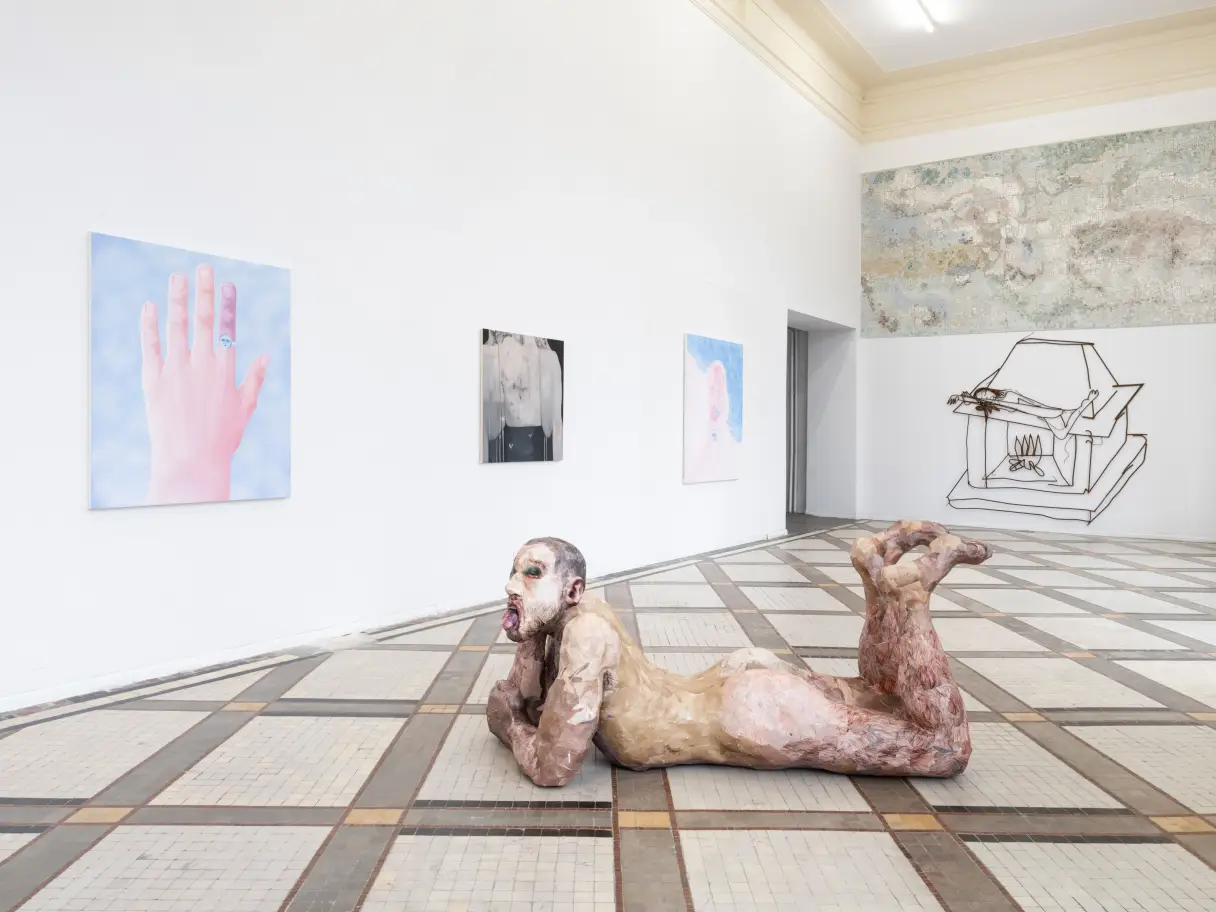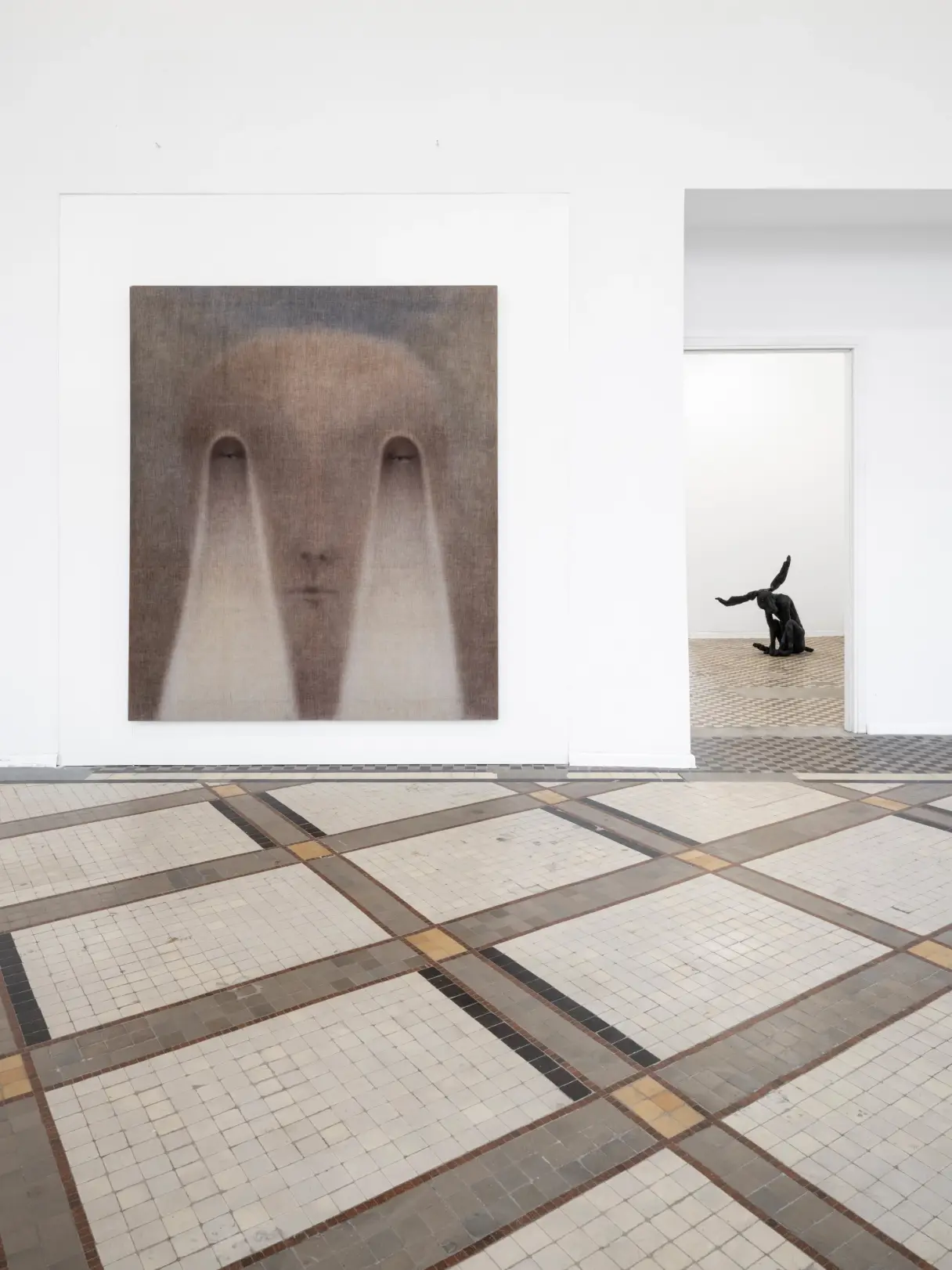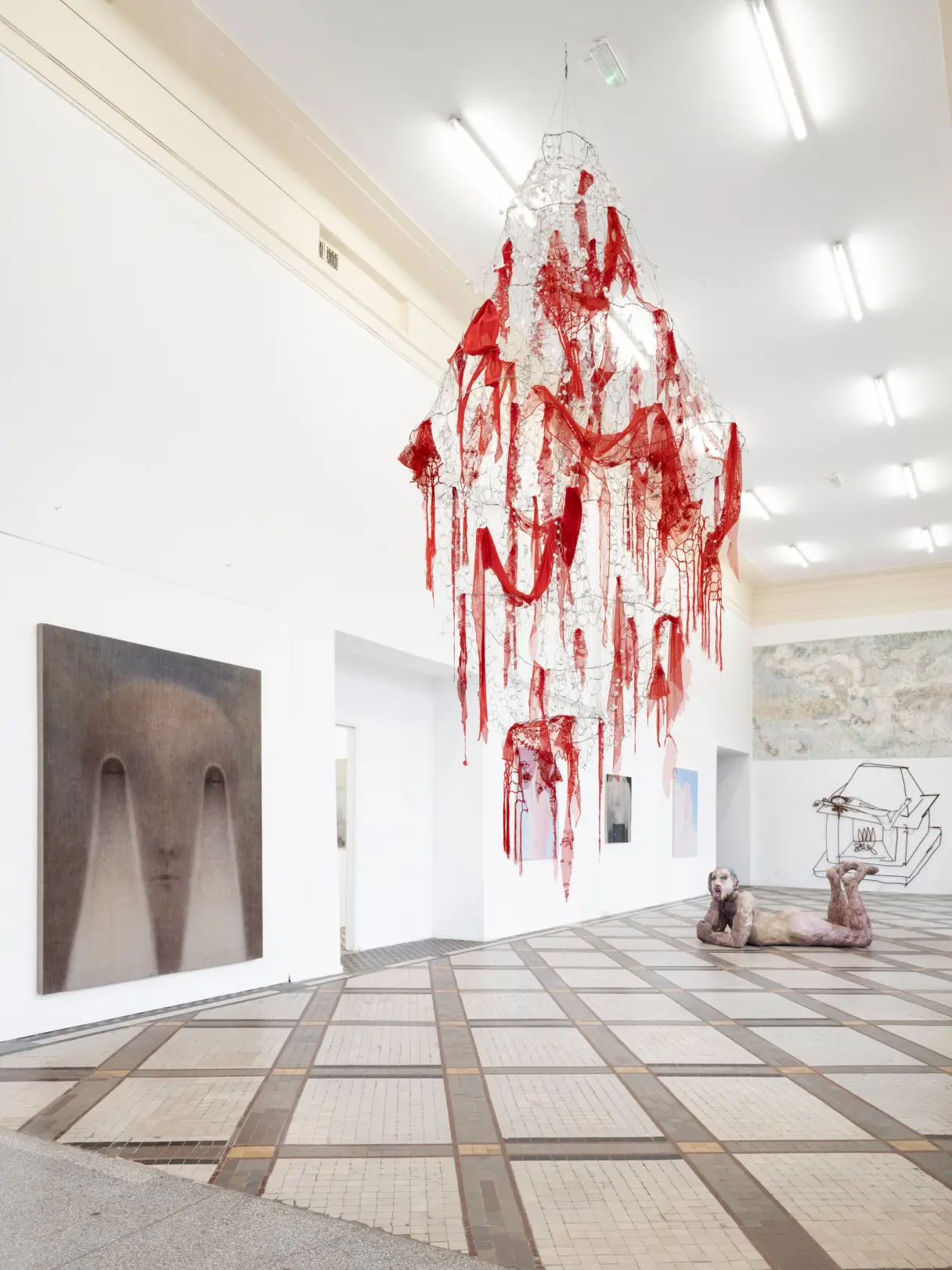Do works of art look back at us when we watch them in exhibitions? Do they think about us as we leave the gallery, indifferent or thrilled, to immerse ourselves in the real life of streets, shops, and homes? Do they return our gaze, like the character from Kirsten Lepore’s film? That protagonist doesn’t just look; they speak from the screen directly to us — the viewers, the strangers. They lie stretched out on their stomach, casting a flirtatious glance over their shoulder. Before telling us they’ve missed us, that it’s been a while, and that they’ve been thinking about us, they greet us with a brief, intriguing “Hi Stranger”, a phrase that hints at the nature of our relationship.
This seemingly innocent greeting invites us to reflect on the relationship between works of art and their audience — on the bodies and objects with eyes, and the orientation of the watchers' view. Is it through our gaze that images come to life in a unique performance? Does the life of objects unfold without the presence of an audience?
The Hi Stranger exhibition delves into the tensions embedded in the acts of showing and observing, seeking a bond in this encounter that may not necessarily be one-sided. What happens when the contact is finally established? Do we stop being strangers? Or is it precisely anonymity and impermanence that ensure a successful relationship? What is exchanged in this interaction? What kinds of information, emotions, or gazes?
“Ophelia-like”
The works of Sebastian Winkler are obsessed for images. The photographic patchwork evokes the artist's own body, yet fragments it through incongruous elements and surprising juxtapositions. It looks for other provisional identities. It unfolds among the flowers, reminiscent of a Pre-Raphaelite Ophelia. It flexes, looks out from inside its throat, and extends its tongue. It becomes part of the landscape, like Narcissus and Daphne before it. It never drowns. Set against a royal red background, Ramses II (2024) embodies a blend of eroticism and vulnerability, being alive and dead, the Sun and the Moon. Water pools in his crotch, seen by contemporaries merely as a vessel, a fossilized remnant. Hands placed on his chest evoke a trap (cage, cross, or prison), yet may also suggest a gesture of peace. In the work directly referencing Kirsten Lepore’s video, the greeting “Hi Stranger” is spoken in a much more assertive voice. Winkler focuses on the erotic pose of the character, seducing with their heavy gaze and flirting with their tongue playfully poking out.
Jan Baszak's shadow sculptures evoke a yearning for an image that does not exist. The artist captures the fragmented essence of the world, mirroring it through the assemblage of discarded objects like old socks and scattered pieces of leather.
A horse tilts its head in serene stillness, caught in a moment of anticipation. It is clearly searching for something, longing for something missing. An oversized hare has been caught in mid-transformation: its paws morphing into hands, into full arms, and finally into the contours of a human back. Swans, the artist’s favorite birds, give a glimpse into his romantic nature. One swan caught in flight, its neck half-extended, recalls the broken fragility of Ophelia, suspended in a space between melancholy and hope. Two more swans, depicted on a nocturnal tapestry, lean toward each other in a shared, intimate bath, their forms blurred in the dark, gazing back from the enveloping darkness. In another textile work, inspired by Caspar David Friedrich’s Tree of Crows, only barren branches are left. Here, the images of animals are formed from the material used for creating the work - leather. Does it represent an illusion-free longing for harmony?
House of Day, House of Night
The idea of home presented in the exhibition is reduced to sketches and outlines. Objects no longer serve their usual functions; they become mere pretexts for reconstructing the past, acting as triggers for memories.
Planeta conjures ancient Slavic beliefs and rituals, its ephemeral scenery, installations and costumes immersing us in a dreamlike atmosphere of encounters in nighttime palace gardens or images of shooting stars. Suddenly, we feel heavy and sluggish, as if bound by collective hypnosis, our gazes moving over the wires of the huge chandelier. It is a ghost released by Planeta into the gallery – a skeleton hovering above the ground. A lamp devoid of its own light, shining only with reflections. A crystal heart.
Wiktoria Walendzik's sculpture also denies the warm glow of home. Fashioned from rebar, it becomes a stage for an intimate yet disconcerting and somehow slow performance. In Dziewczyna wyleguje się nad kominkiem jak kot [The girl lounges over the fireplace like a cat] (2024), the girl stretches her body, bends her leg and extends a hand, all the while feigning indifference, though fully aware of our gaze. Elsewhere, Miki [Mickey] (2019) struggles to rise after a fall as we watch him. Caught in a dynamic moment of transition, he hovers between states. He struggles, but he’s about to draw himself up. No longer defeated but not yet triumphant. Next work also depicts a battle, this time with an Evil Spirit (2019), a nightmare, against oneself. Crushed and immobilized by sleep paralysis, the character is unable to move. The House of Night is an unsafe space.
In her works, Wiktoria Walendzik delves into horizontal poses, investigating the ambivalent meanings of laying bodies, using them to create bathtubs, chaise longues, and beds. The figures evoke more than just fatigue, frailty; they embody regeneration, majesty, and even triumph.
Paulina Pawłowska turns her lens to familiar settings. A bedroom bathed in daylight reveals a bed and two entangled figures in an intimate moment. A bright day. Yet, the work’s title suggests that the scene only exists in a fantasy world. The intertwined body parts—posed like snakes— transform into a chimera, a monster. Vulnerable legs raised in ecstasy. One hand appears commanding, decisive; the other rests inert on a pillow like a theatrical prop.
Pawłowska’s work consistently works with the gaze—she performatively explores it, turns it into choreography, and recreates it. In her new series Living in a Fantasy World (2024) she explores the illusions that images can create. What is intimacy produced before the camera lens and before the audience? Getting closer? Being together?
Karolina Szwed invites viewers to participate in a series of symbolic "homemade exercises”: a face pressed to a mirror transforms into a lamb; a back splits open; someone holds breath in a shower stall. Szwed draws from her own biography, but her works do not directly recreate it. Instead, she focuses on intimate, embarrassing moments, like the narcissistic kisses of the mirror, devoid of power to animate the reflection. Pale paintings on the back, like on old cave walls. Secrets.
Szwed makes a sincere use of symbols from everyday mythology, she engages signs that are close by, shaping the reality around us, like mold, back pain, or household objects. Only by breaking through this layer of familiarity do we reach what the images truly convey: the paralyzing moments of fear, shame, and love.
Under the Skin
Gosia, Magda, and Karolina (2024) are the protagonists of Martyna Miller's works. The artist knows them, calls them their name, but she only lets us guess who they really are. The author invites the actresses to choreographed, improvised sessions where they recreate their past sexual experiences. Once scores for two, these moments now resurface in the artist's works as solo performances. The recordings of body movement, slowed down and dissected into multiple parts, reveal the protagonists' faces and their penetrating gazes that catch us peeping. Faces spill out like ink, resembling early experiments with the cinematograph, at times evoking other more-than-human characters: roots, coral reefs, mycelium.
Figures painted by Jędrzej Bieńko also gaze at us from the canvas. Some of them, unintentionally, resemble the artist himself (a glimpse of muscle memory, a work of hand trained in the past, impulsively seeking the creator’s image). The eyes are nearly invisible, almost non-existent, piercing through the hands as if to remind us of their presence. Or, on the contrary: or they are omnipresent, filling everything, doubled in space. In Bieńko’s works sight and gaze are pushed to extreme, yet they never cease to work. What do they want to see? Who do they want to look at?
Sad jewelry faces stare out from Kornel Leśniak's paintings. They search for a pair of eyes that will acknowledge their pain. The artist gives his works titles that defy reality, bringing accusation or a at least moment of uncomfortable honesty. The artist finds pleasure in exploring his own traumas and vulnerabilities. Sharing them with the audience brings him a sense of solace. In Leśniak’s works, jewelry, family heirlooms, and sentimental treasures transform into handcuffs—small instruments of enslavement and torture. Their weight inflicts minor injuries on the body: an allergy, a bruise, a rash. The serene blue colors hide illness, but the body learns to live with it. A foreign body, both familiar and stranger alike, inhabits us like a grain of sand in a shell. Forever ours.
***
A bashful new order emerges from the “Hi Stranger” exhibition: shameless, extra-institutional spirituality and honesty, nurtured panic, community bound by difficult experiences, taking joy in simply being together. Hope in the face of the senseless an other forms, still unseen in the darkness. So many things can happen in its reign: a kiss and a fire, a backache, a magical transformation, a confession or a theft of an earring. A face may be covered by another face, and a stranger may enter a house without knocking. From such a night, only small fragments, outlines and silent sounds emerge. Something reminds us of itself, while something else remains completely unrecognizable.
After the collapse of the modern world and the negation of postmodernism, the humanities are condemned to use oxymorons, balancing between enthusiasm and pessimism, the proclamation of universal truths and relativism, the desire for meaning and the doubt of meaning, hope and melancholy, sincerity and irony, knowledge and naivety, commitment and non-attachment*.
Close-up on the chest. Pause. A source, and in it, a face. A myth and a catastrophe. Pause. Inhale for four counts, exhale for four counts. The images look at us. What do they seek in the gaze of a stranger? Admiration or alliance? A touch? What do they truly want? A financial transaction? Control? Love? The entire world?
* T. Vermeulen, R. van den Akker Notes on Metamodernism.
Text: Michał Grzegorzek
Edited by: Anka Herbut
Translated by: Maria Wańkowicz-Siwecka


